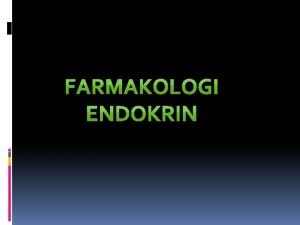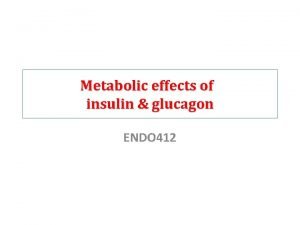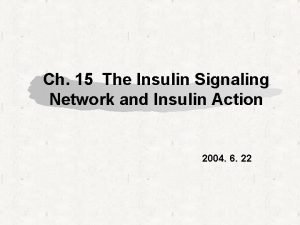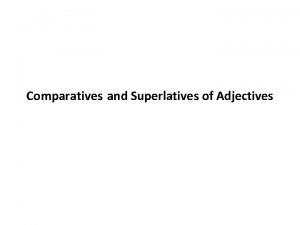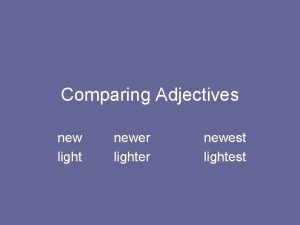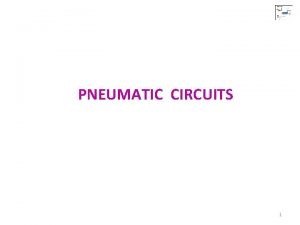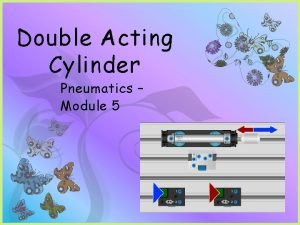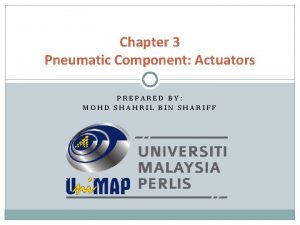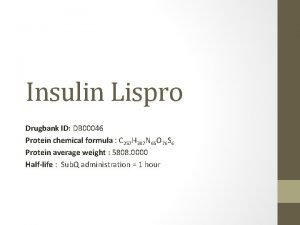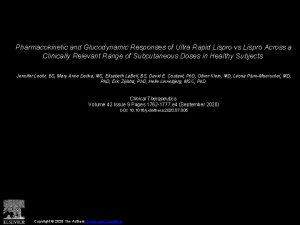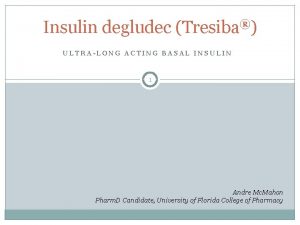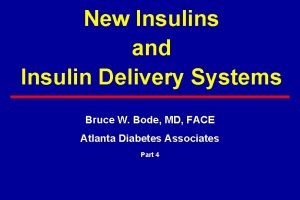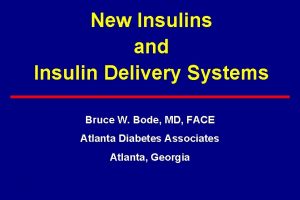NEWER INSULINS CLASSIFICATION RAPID ACTING Insulin lispro SHORT













- Slides: 13

NEWER INSULINS

CLASSIFICATION RAPID ACTING Insulin lispro SHORT ACTING Regular (soluble) insulin INTERMEDIATE LONG Lente (zinc suspension) Insulin glargine Insulin aspart NPH (neutral protamine hagedorn) Insulin detemir Insulin glulisine Isophane insulin

ADVANTAGES OF INSULIN ANALOGUES 1. They provide better control of sugars 2. They carry low risk of hypoglycemia particularly nocturnal hypoglycemia 3. They do not have to be injected half an hour before meals 4. Compliance is improved with long acting analogues as once a day the insulin 5. The need for snacks between meal may be reduced with short acting analogues 6. Advantage in term of weight gain epically with detemir insulin

SHORT ACTING ANALOGUES • These have rapid onset and shorter duration of action. • The peak of onset corresponds more closely with the post prandial glucose peak. Therefore, can be administered immediately before meals. • This avoids post prandial hypoglycaemia that occurs due to long duration of action of soluble insulin.

1. Insulin lispro (Humalog) : § It acts rapidly, so it can be injected 15 minutes after meals in patients with type I diabetes without compromising blood glucose control. § The studies with insulin lispro found that in comparison to soluble insulin the post prandial rise in serum glucose was lower, glycosylated hemoglobin level was also lower and hypoglycaemia was also less § Insulin lispro has been tested for use in pregnancy and gestational diabetes. It was found to be as effective as regular insulin and no teratogenic effects were noted.

2. Insulin aspart (Novolog) : § This analogue prevents the formation of hexamers leading to rapid absorption from subcutaneous tissue than soluble insulin. It has short duration of action. § Glycaemic control was better as measured by decrease in post prandial blood glucose level and glycosylated Hb level as compared to human soluble insulin.

3. Insulin glulisine (Apidra) : § It exerts its action by causing insulin receptor substrate-2 (IRS-2) phosphorylation and also has antiapoptotic activity against cytokine and fatty acid induced â-cell destruction. § It has advantage over regular human insulin by causing less chance of hypoglycemia by administering just before meals.

LONG ACTING ANALOGUE • Ideal basal insulin has long duration of action and provide 24 hour control with minimum variation in absorption and has to be given once a day. • Traditional intermediate and long acting analogues i. e. isophane, lente and ultralente are unsatisfactory. • Isophane insulin has peak onset 4 -6 hrs after injection followed by waning of activity therefore, if given at bed time, insulin level peaks at 12 -2. 00 am when less insulin is required and causes nocturnal hypoglycemia

• Further duration of action of isophane insulin is not long enough to cover the insulin requirement till dawn. Ultralente insulin has long duration of action (1228 hrs) but high degree of variability among patient is seen after subcutaneous injection Two long acting insulin analogues have been developed, insulin glargine and insulin detemir.

Insulin glargine • Insulin glargine is not to be mixed with other insulin, as it becomes cloudy and results in alteration of pharmacokinetic and pharmacodynamics profile. • It precipitates at physiological p. H and absorbs slowly from • injection site. • It has slow onset of action and achieves a maximum effect after 4 -6 hrs and this activity is maintained for 11 -24 hours or longer. • The studies with insulin glargine found that fasting blood glucose were lower, nocturnal hypoglycaemia was less and patient had greater • treatment satisfaction in comparison to isophane insulin • Patients with type 2 diabetes mellitus on insulin glargine had increased • progression of retinopathy, but this risk is also not very clear

Insulin Detemir • Modifying insulin by binding to serum protein albumin • prolongs the duration of action • Its onset of action takes 1 -2 hours and duration of action is for 24 hours. • It is given twice daily to obtain a smooth basal insulin level. • It is shown to be as effective as other long acting analogues i. e. isophane insulin(NPH) in maintaining glycemic control in high doses and fewer episodes of hypoglycemia • Reduction in body weight is another advantage which may be due to direct effect on hypothalamus

Insulin Degludec • an ultra-long acting insulin • It has a duration of action that lasts up to 42 hours • active at a physiologic p. H • formation of multi-hexamers in subcutaneous tissues. This allows for the formation of a subcutaneous depot that results in slow insulin release into the systemic circulation • Insulin degludec has an onset of action of 30– 90 minutes • There is no peak in activity, due to the slow release into systemic circulation.

THANK YOU
 Tall + short h
Tall + short h Rapid acting prandial insulin
Rapid acting prandial insulin Insulina lispro nombre comercial
Insulina lispro nombre comercial Kanika ghai
Kanika ghai Insulin short intermediate and long acting
Insulin short intermediate and long acting Insulin and insulin receptor
Insulin and insulin receptor Insulin and insulin receptor
Insulin and insulin receptor Newer drug delivery system
Newer drug delivery system Pretty superlative
Pretty superlative Light adjective comparative
Light adjective comparative The gym is 21 years newer than the auditorium
The gym is 21 years newer than the auditorium Double acting pneumatic cylinder diagram
Double acting pneumatic cylinder diagram Function of single acting cylinder in pneumatic system
Function of single acting cylinder in pneumatic system Rodless cylinder working principle
Rodless cylinder working principle




